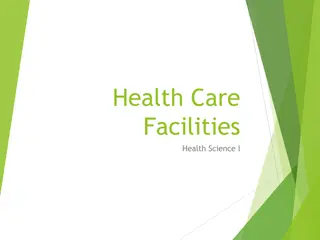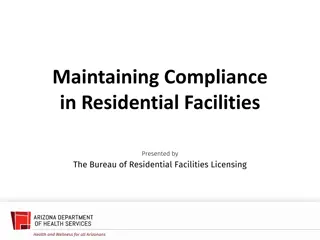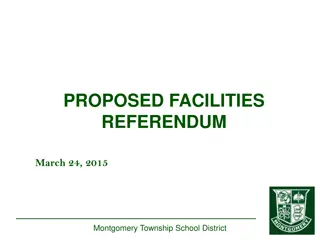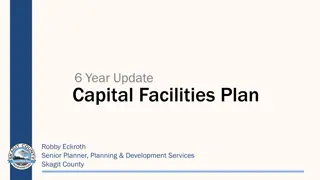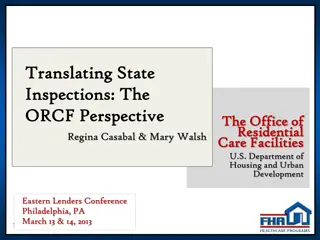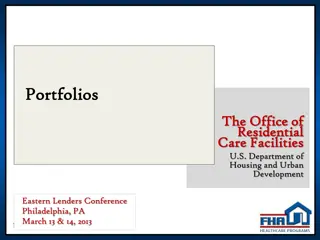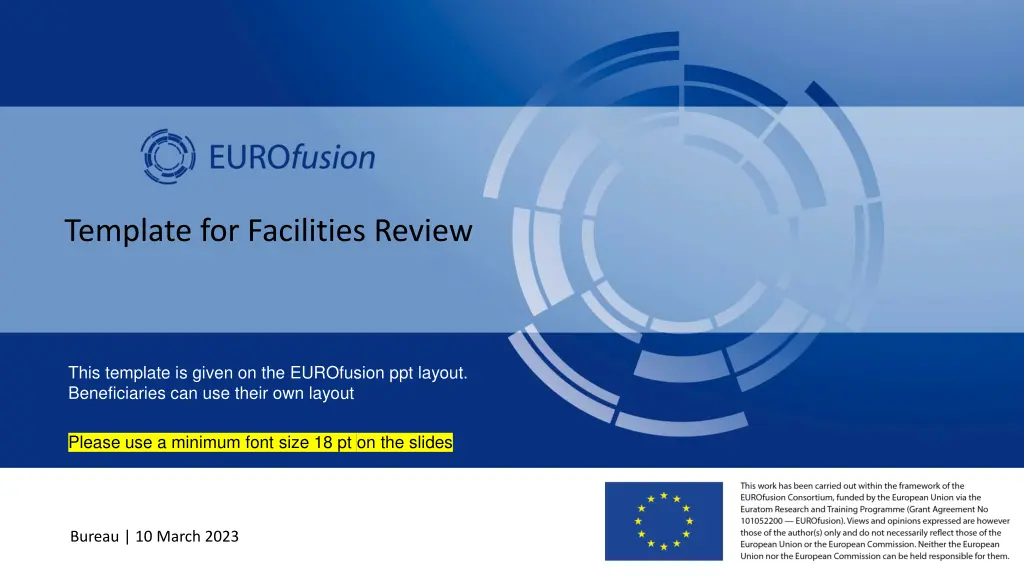
Unique Contributions to Fusion Roadmap and Facilities Review
Explore the unique contributions of DTT to the Fusion Roadmap, focusing on plasma operation regimes, reactor design, and system development. Also, delve into important contributions related to H-mode threshold, edge transport, and reactor scenarios. This comprehensive review highlights key milestones and strategies for advancing fusion energy research.
Download Presentation

Please find below an Image/Link to download the presentation.
The content on the website is provided AS IS for your information and personal use only. It may not be sold, licensed, or shared on other websites without obtaining consent from the author. If you encounter any issues during the download, it is possible that the publisher has removed the file from their server.
You are allowed to download the files provided on this website for personal or commercial use, subject to the condition that they are used lawfully. All files are the property of their respective owners.
The content on the website is provided AS IS for your information and personal use only. It may not be sold, licensed, or shared on other websites without obtaining consent from the author.
E N D
Presentation Transcript
Template for Facilities Review This template is given on the EUROfusion ppt layout. Beneficiaries can use their own layout Please use a minimum font size 18 pt on the slides Bureau | 10 March 2023
Unique contributions to the Fusion Roadmap (max. 5 slides) unique contributions of DTT to Mission 1: Plasma regimes of operation and to Mission 6: Integrated DEMO design and system development 10-year perspective (main limitation low power (max 20 MW), but high current (up to 4 MA) high field should be accessible in time for 10 years plan Development of reactor relevant ELM-free and small ELM regimes and corresponding scenarios to enable longer term perspective Produce corresponding low and high Ip and BT plasmas in the same device to better determine L-mode and H-mode confinement dependencies on current and field Physics of edge / pedestal transport in neutral opaque conditions with strong electron heating and different levels of impurity seeding Study transport in plasmas with high electron heating and low torque and strategies of improving ion energy confinement in plasmas with Te/Ti>1 Longer term perspective Determination of a fusion reactor high confinement regime, possibility of studying ELM-free and small ELM regimes at reactor separatrix densities concomitantly with reactor pedestal top collisionalities, with W wall at reactor P(B)/R and neutral opaque edge Reactor exhaust demonstration : lambda_q vs current , at power (point to be determined with EG 2) Qualify reactor type of scenarios with high radiating fractions and impurity behaviour at reactor parameters, for unprecendented core-edge integration physics. Full field / full current for reactor relevant edge SOL, half field / half current for reactor relevant normalized pressure (beta) Determine confinement dependence on current and field, including possibility of exploring on the same device high BT, low fGRW and low BT high fGRW Integrated reactor relevant confinement regime with energetic particles fulfilling expected burning plasma dimensionless characteristic parameters Perform study of transport in plasmas with high electron heating and low torque and determine strategies of improving ion energy confinement in plasmas with Te/Ti>1 (at higher power and higher current) Template for input to facilities review
Important contributions to the Fusion Roadmap (max. 5 slides) important contributions of DTT to Mission 1: Plasma regimes of operation and to Mission 6: Integrated DEMO design and system development 10-year perspective Parametric dependencies of H-mode threshold in impurity seeded plasmas and various divertor configurations Effects of high shaping on edge transport Negative triangularity scenarios and extrapolability to a reactor Transport properties with negligible core particle source at high power Longer term perspective I- mode scenarios, domain of existence and confinement properties from low to high field in the same device High- scenarios in full W wall device at concomitant reactor collisionality and density Template for input to facilities review
Present technical capabilities (max. 2 slides) List the main parameters of the facility and briefly describe the technical capabilities (the focus should be on capabilities relevant for the Fusion Roadmap) OLD SLIDES FOLLOW Template for input to facilities review
Unique contributions to the Fusion Roadmap (max. 5 slides) unique contributions of DTT to Mission 1: Plasma regimes of operation and to Mission 6: Integrated DEMO design and system development 10-year perspective Study extrapolability of ELM-free or small ELM scenarios to high density but low collisionality (start of ) Effect of impurity seeding in plasmas with full core-edge integration at high performance Study fuelling in opaque edge conditions Compare on same device high BT, low fGRW and low BT high fGRW Study transport in plasmas with high electron heating and low torque Test ion stiffness mitigation strategies in plasmas with Te/Ti>1 Longer term perspective Study the compatibility of good confinement properties with heat exhaust at reactor relevant P/R Study extrapolability of ELM-free or small ELM scenarios to high density but low collisionality and to sufficiently low q95 Study pedestal physics at high density but low collisionality Improve determination of Ip scaling of confinement Study the role of energetic particles as mediators of cross scale couplings and their impact on turbulent transport and on plasma-wall interaction Template for input to facilities review
Important contributions to the Fusion Roadmap (max. 5 slides) important contributions of DTT to Mission 1: Plasma regimes of operation and to Mission 6: Integrated DEMO design and system development 10-year perspective Parametric dependencies of H-mode threshold in impurity seeded plasmas and various divertor configurations Effects of high shaping on edge transport Negative triangularity scenarios Turbulence diagnostics, model validation Density peaking at negligible core NBI particle sources High- scenarios in full W wall device (start of) Longer term perspective I- mode scenarios High- scenarios in full W wall device Template for input to facilities review
Present technical capabilities (max. 2 slides) List the main parameters of the facility and briefly describe the technical capabilities (the focus should be on capabilities relevant for the Fusion Roadmap) Template for input to facilities review
Future technical capabilities (max. 2 slides) Described planned (possible) future upgrades and the time they (could) become available as well as the impact this has on the unique and important contributions of the facility Template for input to facilities review
Forward planning (max. 1 slide) Summary of the overall time schedule and planning of the facility (if not already adequately addressed in earlier slides) a summary Gantt chart is appreciated Template for input to facilities review
Achievements (for existing facilities - max. 2 slides) Brief summary of key scientific and technical achievements obtained with the facility Template for input to facilities review
Resources involved (max. 1 slide) What are the resources needed for operation average number of operation days/year (over the past 4 or 5 years if applicable) yearly cost of operation corrected for inflation (expressed in 2022 euros) Yearly manpower for operation Template for input to facilities review
Use of facility and collaborations (max. 1 slide) Number of facility users (e.g. yearly integrated full-time equivalent (FTE) of facility users) Number of PhD/MSc theses using experimental data from facility in last 5 years Number and impact of peer-reviewed publications based on experimental results from facility (specify for the last 5 years) Number of patents as spin-off from the facility and technology spin-off to industry (if applicable) Number of collaborations within fusion, but outside EU (i.e. outside EUROfusion) Sharing facility with other organisations (ITER, F4E) or other fields of research (if applicable) Template for input to facilities review


